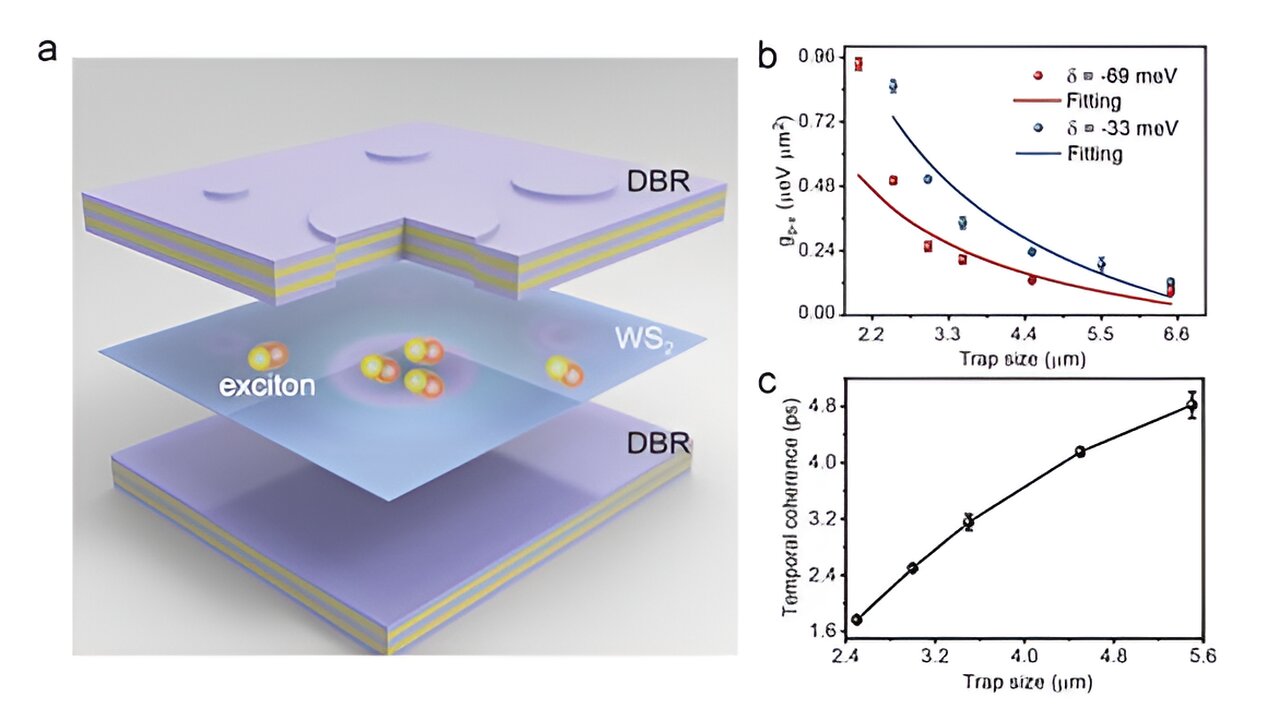Exciton polaritons, these fascinating hybrid quasiparticles resulting from the strong coupling between excitons and photons, have long been studied in cryogenic conditions to explore many-body physics and quantum photonic phenomena. However, the emergence of atomically thin transition-metal dichalcogenides (TMDs) as exceptional semiconductors operating at room temperature has sparked great interest. TMDs possess intriguing valleytronics features and exhibit strong exciton resonance. Yet, in TMDs microcavities, the overall nonlinear interaction strength of polaritons has been found to be relatively weak compared to other wide-bandgap semiconductors.
To address this limitation, researchers have dedicated considerable effort to enhancing the nonlinear interactions in TMDs microcavities. They have explored various approaches, such as utilizing 2s states, trion, and moiré or dipolar excitons. However, these excitons tend to dissipate quickly at elevated temperatures, disrupting the strong coupling condition. Therefore, the quest for achieving a suitable combination of strong nonlinearity and thermal stability in TMDs polaritons for realistic integrated devices has become a top priority.
In a recent groundbreaking study published in Light: Science & Applications, a team of scientists led by Professor Qihua Xiong from Tsinghua University and Beijing Academy of Quantum Information Sciences in China has made significant progress in this field. They have successfully created fully deterministic potential wells using lithographic mesas to trap polaritons in a monolayer WS2 microcavity. Through experimental observations, they have demonstrated the discretization of photoluminescence dispersions and the confinement of polaritons in spatially-defined patterns, providing clear evidence of the deterministic on-site trapping effect.
Moreover, the researchers have conducted comprehensive investigations into the polariton nonlinearity under these cavities. By performing non-resonant power-dependent measurements, they have discovered that the polariton-exciton interaction plays a dominant role in the observed spectral shift. They have also found that improving spatial confinement can increase this interaction by approximately six times at room temperature. Additionally, the coherence of trapped polaritons has been significantly enhanced, thanks to the spectral narrowing achieved through tailored manipulation in the picosecond range.
These remarkable findings demonstrate the feasibility of using programmed micro-nano fabrication techniques to achieve controllable nonlinearity and coherence of polaritons in TMDs at room temperature. This breakthrough opens up exciting possibilities for the development of future polariton-based integrated devices, including polariton modulators, polariton quantum sources, and quantum neural networks.
The scientists involved in this study highlight three key advantages of their approach. Firstly, their method allows for operation under ambient conditions, which is crucial for the realization of practical polariton-based integrated devices. Secondly, the use of mesa cavities enables the confinement of polaritons through their photonic part, rather than the excitonic part. This practical consideration takes into account the extremely small Bohr radius and the sub-micrometer transport length of excitons. Lastly, the utilization of mesa cavities ensures the creation of fully deterministic potential wells, eliminating the randomness that may arise from strain or air gaps during sample preparation.
In conclusion, this work represents a significant step forward in the manipulation of interacting exciton polaritons in TMDs microcavities. By engineering artificial potential wells, the researchers have demonstrated the ability to control polariton properties and pave the way for simulating the polariton Hamiltonian with more complex potential landscapes. Ultimately, this breakthrough brings us closer to the realization of integrated polaritonic devices operating at room temperature.








